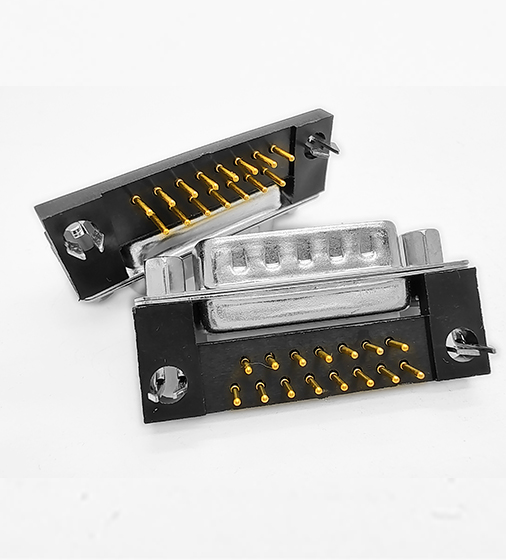D-Sub Connectors for Long Distance Communications
2025-06-23
D-Sub connectors, often used in a wide range of electronic and computer systems, can also play a critical role in long-distance communications. Here’s a breakdown of how they are applied and why they’re suitable for such environments:
Overview of D-Sub Connectors
D-Sub connectors are named after their "D" shape, with a metal shield that provides mechanical support and shielding against electromagnetic interference (EMI). These connectors are typically used for transmitting signals between devices, especially in legacy systems and environments where robustness and durability are key.
Application in Long-Distance Communications
Signal Integrity and Noise Resistance:
D-Sub connectors can help maintain signal integrity over long distances. They often feature built-in shielding, which is crucial for preventing electromagnetic interference (EMI) and radio-frequency interference (RFI) that can degrade the quality of the transmitted data over long cables. This is particularly important in high-speed communication systems, where maintaining clear signals is paramount.
Common Uses:
Serial Communication: D-Sub connectors, especially DB9 and DB25, are frequently used in RS-232 or RS-422 communication standards, commonly found in serial communication systems. These standards are often employed for data transmission in industrial control systems, remote sensing, and telemetry.
Industrial and Military Applications: Due to their ruggedness, D-Sub connectors are used in industries such as aerospace, defense, and transportation, where communication systems need to work reliably over long distances in harsh environments.
Long Cable Runs:
For long-distance communication, using quality cables with D-Sub connectors can support longer cable runs without significant degradation of signal. In serial communications, for instance, RS-232 can work over distances of up to 50 feet (15 meters) at standard baud rates, while RS-422 or RS-485, which use differential signaling, can support distances up to 4,000 feet (1,200 meters).
Durability in Harsh Environments:
Long-distance communication often occurs in remote locations or industrial settings where equipment is subject to physical wear, temperature variations, and moisture. The rugged design of D-Sub connectors ensures reliable performance under these conditions, making them a preferred choice for industrial communications.
Modular Systems:
In complex long-distance communication networks, modular systems where different devices are connected via D-Sub connectors help streamline setup and maintenance. By providing a standardized interface, it’s easier to troubleshoot, replace, and upgrade components as needed.

Power Over Data Lines:
Some specialized D-Sub connectors can support both power and data transmission through a single cable. This can be beneficial in long-distance communications, as it reduces the need for additional power lines, simplifying the overall setup.
Limitations
Speed and Data Rate: While D-Sub connectors are reliable, they may not support the highest data transmission rates seen in modern communication systems (e.g., Gigabit Ethernet). For high-speed, long-distance communication, alternatives like fiber optics or coaxial cables are often more suitable.
Size and Weight: For very compact or lightweight communication systems, D-Sub connectors might be less ideal compared to newer, smaller connector types.
Conclusion
In long-distance communication systems, D-Sub connectors offer durability, shielding, and flexibility, making them a reliable choice for industries like aerospace, military, and industrial control systems. While they may not be the fastest option, their versatility and robustness often make them the go-to solution in environments where signal integrity and durability are more critical than ultra-high speeds.
As a professional manufacturer and supplier, we provide high-quality products. If you are interested in our products or have any questions, please feel free to contact us.